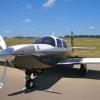#5 CHT Ovation
-
Members Online
- TCC
- Hank
- Schllc
- wings_level
- jetdriven
- NickG
- Greg Ellis
- Yetti
- dkkim73
- IvanP
- acekng1
- Bob7point7
- good2eat
- MikeOH
- Taz
- triple8s
- DXB
- FlyingScot
- outermarker
- Dmax
- Irek
- Jpeters00
- tb5847
- 00-Negative
- DanM20C
- mluvara
- SKI
- Skyland
- eman1200
- AMG880
- gtsio520
- Justin Schmidt
- redbaron1982
- TangoTango
- CaptBrad
- Hangar_46
- Flik33
- Fly Boomer
- Paul Thomas


Recommended Posts
Join the conversation
You can post now and register later. If you have an account, sign in now to post with your account.